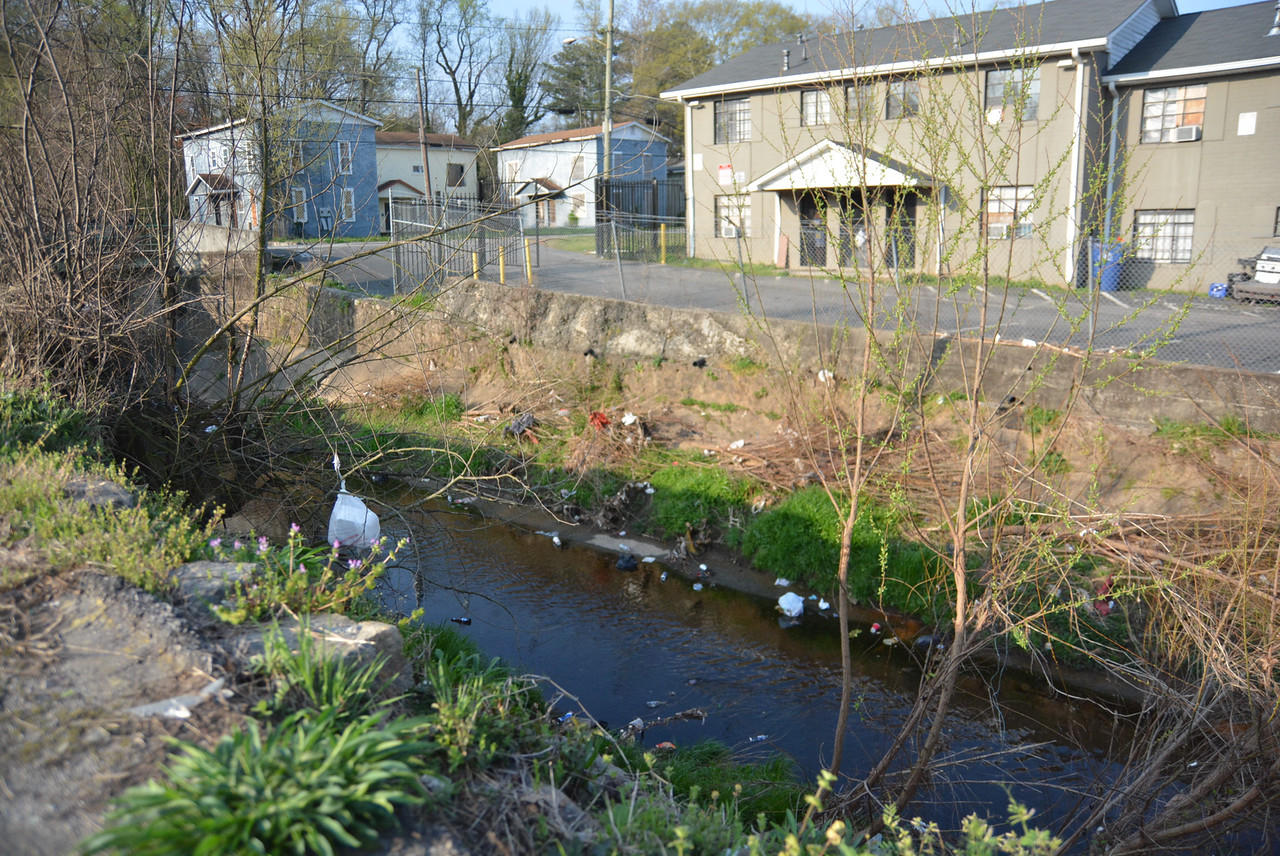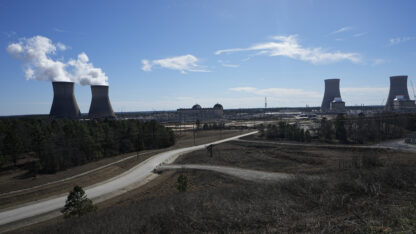How Proctor Creek Health Problems Affect Those Living Nearby

Alison Guillory / WABE
Proctor Creek flows out of downtown Atlanta through the west side of the city. There have long been problems with the health of the creek, especially flooding and pollution.
That can lead to health problems for the people who live near the creek, which flows through 35 Atlanta neighborhoods on its way to the Chattahoochee River.
In places, Proctor Creek is actually really nice; it looks like a North Georgia mountain stream, flowing over granite boulders. It’s hard to picture it as a public health threat.
But the U.S. Environmental Protection Agency recently found traces of banned pesticides in fish in Proctor Creek. There are stretches that are pretty bad-looking, with dirty water running through a cement ditch, clogged with trash.
Resident Litriece Michelle Yarbrough said when the creek floods, the rats climb out.
“The rats so big they look like cats,” she said. “They hang on top of the fence when it floods. They’re like humans, they’re trying to save their lives.”
‘Environmental Injustice’
The potential health issues described by Yarbrough include rodents, which can spread disease, both by themselves, and with the fleas and ticks that are on them. There are also concerns about flooding water with e. coli and fecal coliform bacteria in it, and potentially places for mosquitoes to breed, which can mean Zika or West Nile Virus.
“You’re talking about potential for water-borne diseases,” said Monica Robinson, who works in the environmental justice program at the Fulton County Department of Health.
Many neighborhoods around Proctor Creek have weathered decades of disinvestment and people moving away, so beyond the creek itself, there’s crime, blight, abandoned houses and illegal dumping. There’s also air pollution from roads, trains and businesses.
“So you’re talking about physical issues, you’re talking about social issues and economic issues all coming together and convening in a neighborhood,” Robinson said.
It can also add up to be a burden on mental health, she said.
“These are issues that are typical for what we call neighborhoods that are experiencing environmental injustices,” Robinson said. “It’s been well documented that those neighborhoods tend to be minority and low-income.”
Four years ago, the Environmental Protection Agency designated Proctor Creek one of its priority “urban waters” locations in the country. That’s brought more federal attention to clean up Proctor Creek and improve public health, including an ongoing study by the U.S. Army Corps of Engineers.
Mold Study
But it’s difficult to say for sure what specific thing leads to any given health problem when there are so many.
A study by scientists at Emory University tried to tackle one element affecting Proctor Creek neighborhoods: Mold.
“Mold is a known trigger for asthma development, as well as asthma symptoms. It can worsen asthma symptoms,” said Melanie Pearson, who manages community outreach for the HERCULES program at Emory University’s Rollins School of Public Health.
Pearson’s job is to link up communities that have environmental health concerns with the scientists who study them. Emory scientists partnered with local residents went to English Avenue and Vine City, low-lying neighborhoods in the Proctor Creek area with known flooding problems, to research mold and asthma.
“We’re talking about mold throughout the house, so not just places where you would expect water to be,” said Pearson.
Of the 150 houses where samples were taken to check for mold, more than 80 percent had it. Of the adults who answered the doors at those houses, 14 percent had asthma.
But there’s a complication: Few of the homes surveyed had flooding issues.
Is the mold caused by the creek? Maybe. Pearson said it could also be that houses are run-down, and landlords aren’t quick to fix leaks.
“You do have the creeks there; you have a lot of water running in. So yes, a lot of it can still be due to the high moisture,” she said. “But, you know, humidity. We live in the South, it’s very humid. I would say probably a lot of this is due to the disrepair in the homes and the disinvestment in the community.”
This leads back to broader challenges, instead of a single smoking gun.
Taking Ownership
Still, the Emory study is valuable. It gives scientific, published, peer-reviewed credence to community concerns.
“Data is valuable,” said Yomi Noibi, the head of Eco-Action, a local non-profit. “When people see numbers, and they connect with it, it helps to drive policy change.”
He’s focused on getting the message of the study out to the neighborhoods and is working with people in government, like Fulton County’s Monica Robinson.
Noibi said residents have embraced the research and are sharing tips on how to get rid of mold.
“They took ownership of the findings,” he said. “When the community takes ownership of something? Oh my God. You are on the right path.”
This is part of a continuing series about Proctor Creek that airs on “Morning Edition” with WABE host Denis O’Hayer. Previous stories have covered the history of activism in the area, and the root of the problems with the creek. Other stories will look at past and future solutions to fixing the creek.
9(MDAxODM0MDY4MDEyMTY4NDA3MzI3YjkzMw004))







